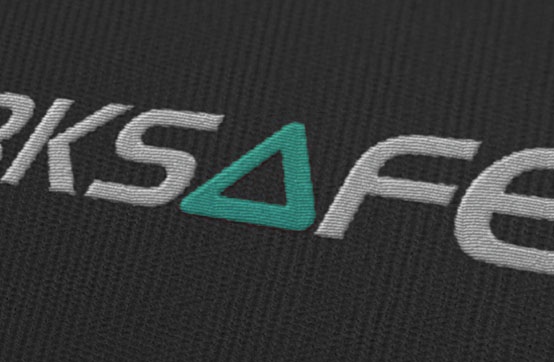
5 Things to Consider When Designing a Company Uniform
Choose Fabric with Care
Delta Air Lines’ “Passport Plum” uniforms, made by the global Lands’ End clothing company, looked striking, but some staff claimed that the fabrics used were “toxic” and caused serious skin irritations. Despite “extensive testing”, some employees stated that the uniforms were uncomfortable to wear.
Work uniforms should present a professional image while allowing your staff to perform their tasks comfortably. You’ll also want your uniforms to last as long as possible to reduce the cost of repairing or replacing them, as well as the environmental impact. Consider using high-quality fabrics that don’t wrinkle easily, that wash well and are hardy enough to withstand daily wear while offering a good level of comfort to your team. If you opt for brightly coloured uniforms, make sure the fabric you choose locks in the colour and is resistant to fading.
Company uniforms are designed to unite a team, with all members presenting an identical branded look. If your staff are wearing uniforms that have faded to varying degrees, the image projected to customers will be far from professional. Ultimately, the fabric you choose will depend on the look you want to create and the tasks you set your employees. Shop from a reputable supplier and they will be able to advise you on the best fabrics for your specific requirements.
Involve Your Employees in the Design Process
Perhaps if Delta had involved its employees throughout the design process, it might have avoided the difficulties it is facing now. Your employees are the ones who will be wearing the uniform and they know what their working day involves better than anyone. Why wouldn’t you ask for their input? Well-designed company uniforms boost productivity, while, as Delta is experiencing, uniforms that employees are unhappy with will create problems that drive resources away from business growth.
Ask your employees for their input on the uniform design and functionality. Gather their ideas and seek feedback when you have mockups of potential designs. Employees should be comfortable with their work uniforms both physically and emotionally. You may be able to tell which fabrics are the softest, but how can you know that Marie is self-conscious in short-sleeved t-shirts unless you ask? If an employee is forced to wear work clothing they are not happy in, day in day out, morale and productivity will suffer. It is important that staff uniforms fit well. Ill-fitting workwear will look unprofessional, feel uncomfortable and possibly hinder performance. Make sure you collect information on the size requirements of your workers. Buying everyone a “unisex medium” size will not win you any popularity contests.
Don’t forget to do some creative brainstorming on company uniform design with your team. If you don’t involve your staff to make sure uniforms are comfortable and fit well, you’re missing a trick. Staff have first-hand contact with your customers and will offer a different perspective on the brand. They’ll no doubt have great insight into what will strike a chord with your target consumers (and what will send them running to the shop next door!)
Finally, after all the brainstorming, feedback and designing, make sure you factor in time and budget for a wearer trial. Order a handful of your chosen design and ask a cross-section of your team (different genders, roles, seniorities, etc.) to wear them for a few days. Gather their feedback and either proceed with a bulk order or adjust the design. Rushing to order hundreds of uniforms that no-one in your business has ever worn for a working day is a sure-fire way to add to your bill and upset your employees.
Make Sure Your New Company Uniforms Reflect Your Brand
Your brand is your reputation. Your reputation dictates your sales. Your sales figures determine your profit. Consider your brand as a whole and make sure that your new bespoke uniforms align with its existing branding. If your signage is purple, your logo is purple and your marketing literature is purple, choosing bright red branded t-shirts for your new uniform makes no sense at all. Consider your marketing strategy as a whole and make sure your uniform design fits. Colour consistency is key to branding success. Inconsistent branding is one of the biggest mistakes you can make when it comes to successfully growing a business and corporate identity. Opt for a bespoke company uniform and you can incorporate your logo and brand colours in the uniform design. It’s a good idea to use the same font across all of your marketing materials. Consistent branding helps customers become familiar with your company, and familiarity breeds trust. Ultimately, customers who trust you are far more likely to buy from you.
Personalise Your Uniforms
Including a company logo on staff uniform pretty much goes without saying, at least on upper body garments. But have you considered going a step further to really make your team stand out? Printing or embroidering an employee name onto uniform, or wearing a name badge on the chest, can be an effective way to help your staff instantly build a relationship with your customers. Customers like to know who they are dealing with and will be more likely to initiate an interaction with staff if they know how to address them. As with all uniform design, it’s a good idea to trial this and judge the results before committing to personalising every piece of uniform for every member of staff.
Adding a bold call to action can drive customer engagement and is perhaps a more cost-effective option than naming uniforms. T-shirts with questions or statements, such as “Can I help?” or “I have the answer to your question!” are a fun and informal way to start a conversation. It also clearly marks the individual as a customer service employee who will be able to help shoppers with their queries.
Consider Your Budget
Budget will always be a consideration for any business, whether you’re a startup or a mammoth corporate like Delta Air Lines. Be realistic about the budget you have, and not just in the short term but the long term too. More elaborate garment designs or branding in multiple locations on a garment are likely to cost more.Think carefully about what you are trying to achieve, set a budget and stick to it.
Your uniform can grow with your business. However, you won’t want to re-design your uniform too often, so think about what will best showcase your brand in the future. The Delta uniform upgrade was its first since 2006 — make sure you and your staff are happy with your design, as it’s likely to be around for some time. When making budget decisions, you should consider the work environment of your staff and the activities they are expected to perform. Will the uniform you choose endure the demands placed on it? Will you need to order frequent replacements? How many items will each staff member need? Perhaps some staff members will wear their uniform all the time, while others may only need it for specific occasions. Some staff members may have roles that will necessitate frequent replacements to maintain the brand’s image. Work with your supplier to make sure that you achieve your goals without exceeding your budget.
Start Creating Your Bespoke Company Uniforms
Designing your own company uniforms is a great business decision, but it’s also a commitment that requires careful consideration. Make sure you involve the people who will be wearing the uniforms, consider your branding as a whole and don’t bust your budget. Trial runs are incredibly important to ensure employee satisfaction and to prevent wasting your precious budget.
 VIEW BASKET
VIEW BASKET


